If 2020 has taught us anything, it’s that the only certain thing about the future of work is the uncertainty! Where will people work in the future? Do we need our existing space? Is it really possible to be as impactful at home as it is in the office? As you can imagine, with us being in the workplace business, these questions matter to us. We decided to take matters into our own hands and find answers that benefit our clients and partners in our region.
We partnered with workplace research gurus, DORIS Research, to conduct a study and collect data in five research areas: collaboration, creativity, innovation, strategy, and productivity. DORIS collected more than 840 collaborative encounters in a virtual usability study to see how these five business drivers have been impacted by the changing work dynamics we’ve seen in 2020.
After several weeks of data collection, the results were…surprising! You can check them out here or dive into them with one of our workplace consultants (which we recommend). The data is fascinating and shows that there are multiple paths forward post-Covid-19.
We sat down with DORIS’s lead researcher and VP of operations, Meghan Tooman (or Math Meghan, as we affectionately call her), to learn more about her experience with the study and what she found most interesting. Scroll below to learn more about their qualitative-meets-quantitative approach.
What Lies Ahead for the Future of Work After Covid-19?

What were you most excited about when diving into this research opportunity?
Meghan: Being the data lover that I am, when presented with this opportunity, I was excited to collect data in a manner that was different than everyone else…not a survey! I was also really excited to look at a bigger, more holistic picture of business drivers in the hope of starting some new conversations.
Why does it matter that this study features data from Midwestern organizations?
Meghan: As a Midwesterner myself, I think it’s important to recognize that what may be true for the coasts may not always be reflected here. Allowing our peers in various industries to drive a new conversation and give them a meaningful platform is powerful.
Did DORIS use any new tools in conducting this research?
Meghan: While we didn’t use tools that were new to us, we did use existing tools in a completely new way…sparking innovation for our team! For example, we generally use a mobile data collection app called Fulcrum for our on-site usability studies. We shifted gears and used this app for individuals to report their collaborative encounters from wherever they were.
What was your favorite part of data collection?
Meghan: I can’t choose just one part of the data collection that I enjoyed most! I enjoyed all of our orientation meetings where I met the participants and introduced them to the study. I am also enjoying all of the interesting conversations we are having now surrounding the results.
Out of all the findings, which did you find most interesting?
Meghan: What was most interesting to me are the intangibles we were able to identify through the interviews (I know, the statistician is most surprised by the qualitative data!) For example, the fact that we take for granted, or just don’t think about, what support a business receives by having people in a space together. When space is no longer a factor, how other things such as collaboration and creativity are affected, and that people need to figure out how to support themselves. Which allows for a lot of opportunities for future research and innovation!
How can other organizations leverage these types of insights for themselves?
Meghan: I think the first thing an organization should do is think about what drivers are important to their individual organization. Then start asking the necessary questions (and research) what space and work styles will best support where they want to go long term. (Email me to get started!)


